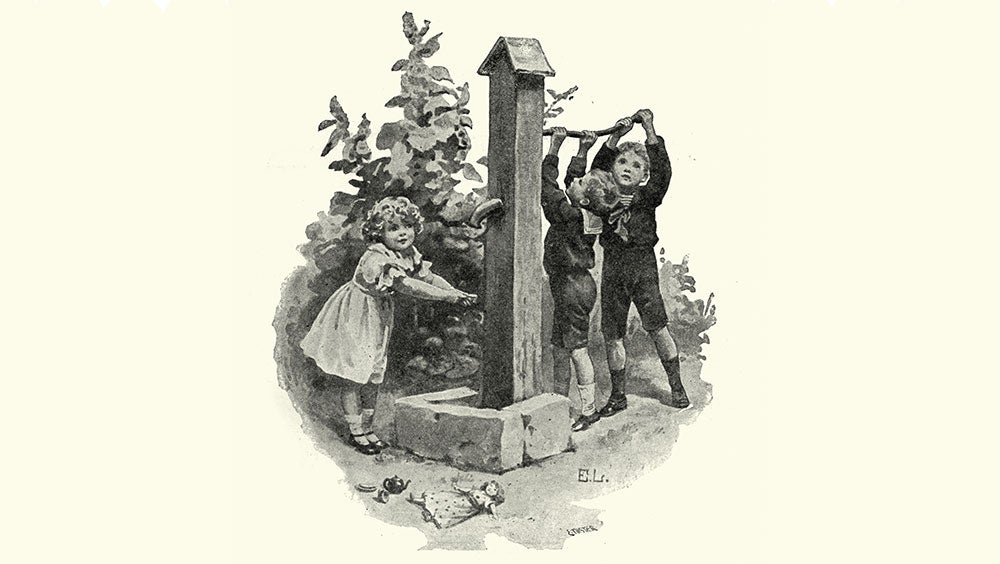From Past to Present: Cold and Flu Prevention for the 2023–2024 Season

If it isn’t evident from the changing leaves, cooler temperatures, and kids busy back at school, Fall is upon us. The season’s change signals many things including cold and flu season. As people make their way indoors for more events and gatherings, the risk of spread of respiratory pathogens such as rhinovirus, influenza, RSV and COVID-19 increases. As we prepare for this respiratory virus season, let’s look back at how illness prevention has evolved.
Historical Cold and Flu Prevention Was Curious and Innovative
Having an annual respiratory illness season is not new. In fact, it is something that goes way back, beyond each of our lifetimes. Records have found mentions of influenza-like illness and spread as far back as 1,500 years ago.1 The popular belief of the time was that illness spread through miasma, which is unpleasant or unhealthy smelling air.2 Viruses that infect humans were not discovered until 19013 and shortly after, germ theory, the notion that certain diseases are caused by microorganisms in the body, took its place as the scientific theory for many infectious diseases.4
Before the discovery of viruses and adoption of germ theory, there was still a conscious effort to prevent the spread of illness. During the 17th century, physicians wore beaked masks, stuffed with aromatic herbs, and leather gloves to prevent plague. More modern prevention methods of the 19th century included gargling salt water daily,6 placing sliced onions around the home to “absorb” germs,7 and spraying an “anti-flu solution” into the air.6 While these prevention methods were curious and creative, they may not have been that effective. Other measures, like masking and isolation, were effective and continue to be used today.
As a result of advancement in modern science and understanding of disease, the past several decades have ushered in more effective ways to help combat the spread of pathogens.
Times Have Changed, So Has Our Ability to Fight Back
The COVID-19 pandemic brought with it uncertainty about seasonal patterns of respiratory illnesses these past few years. Regardless of what this coming cold and flu season may bring, we can rest assured knowing that today we have the education and resources necessary for prevention. Consider the following keys to success.
Identification: Know Your Enemy
Many of the respiratory illnesses that will be spreading this season have similar characteristics. Pathogens like rhinovirus, influenza, Respiratory Syncytial Virus (RSV) and COVID-19 cause similar symptoms and spread similarly through respiratory droplets. When someone ill coughs, sneezes, or talks, germs spread and many end up on nearby surfaces, where they can survive for weeks.8 Although these similarities exist, prevention may be different. Learn how to differentiate the epidemiology of common respiratory pathogens to ensure you have the correct prevention strategies in place.
Prevention: Attack on All Fronts
The rise of vaccines has played a critical role in protection against respiratory illness infection. Today, we have more options for immunization than ever, and this year we have access to an RSV vaccine and updated COVID-19 vaccines.9 Additionally, hand washing, respiratory etiquette, masking, and isolation when ill are proven strategies to prevent further illness spread. While each of these play an important role in prevention, environment focused actions like cleaning and disinfection, can help stop transmission from surfaces.
Many EPA-registered solutions can kill influenza and other common respiratory pathogens in as little as 15-seconds on common surfaces. Products that are ready-to-use — no need for dilution — also help to efficiently tackle high-touch surfaces and shared spaces by reducing labor and product costs. Likewise, established protocols and training allow for effective cleaning and disinfecting to occur. Both professional cleaners and building occupants play a vital role in helping to reduce surface spread of germs.
Although we no longer believe stinky air causes illness or that onions prevent the spread, one thing we can be sure of is that proper preparation and prevention can make all the difference in protecting spaces and helping to stop the spread of cold and flu this upcoming season.
References
1. Morens DM, North M, Taubenberger JK. Eyewitness accounts of the 1510 influenza pandemic in Europe. Lancet [Internet]. 2010;376(9756):1894–5. Available from: http://dx.doi.org/10.1016/s0140-6736(10)62204-0
2. Tulchinsky TH, Varavikova EA, Cohen MJ. A history of public health. In: The New Public Health. Elsevier; 2023. p. 1–54.
3. Mirza AZ, Shamshad H, Osra FA, Habeebullah TM, Morad M. An overview of viruses discovered over the last decades and drug development for the current pandemic. Eur J Pharmacol [Internet]. 2021 [cited 2023 Sep 18];890(173746):173746. Available from: http://dx.doi.org/10.1016/j.ejphar.2020.173746
4. Germ theory [Internet]. Contagion – CURIOSity Digital Collections. [cited 2023 Sep 19]. Available from: https://curiosity.lib.harvard.edu/contagion/feature/germ-theory
5. Conti AA. Protective face masks through centuries, from XVII century plague doctors to current health care professionals managing the COVID-19 pandemic. Acta Biomed [Internet]. 2020 [cited 2023 Sep 19];91(4):e2020124–e2020124. Available from: https://www.mattioli1885journals.com/index.php/actabiomedica/article/view/10231
6. Little B. Photos: Innovative ways people tried to protect themselves from the flu [Internet]. HISTORY. 2020 [cited 2023 Sep 18]. Available from: https://www.history.com/news/flu-masks-protection-photos
7. LaBianca J. 9 crazy old-time remedies that were used to treat the flu [Internet]. Reader’s Digest. 2018 [cited 2023 Sep 18]. Available from: https://www.rd.com/list/crazy-old-time-flu-remedies/
8. Wißmann, J. E, et al. (2021). Persistence of pathogens on inanimate surfaces: A narrative review. Microorganisms, 9(2), 343.
9. Looking ahead at COVID, flu, and RSV vaccines for fall 2023 [Internet]. Johns Hopkins Bloomberg School of Public Health. 2023 [cited 2023 Sep 19]. Available from: https://publichealth.jhu.edu/2023/looking-ahead-at-covid-flu-and-rsv-vaccines-for-fall-2023






